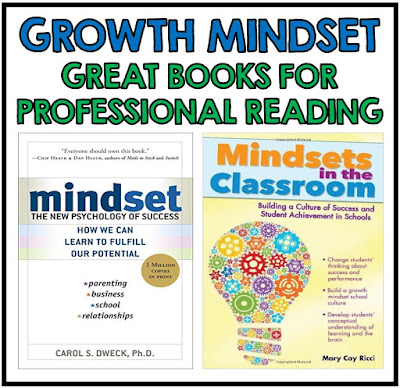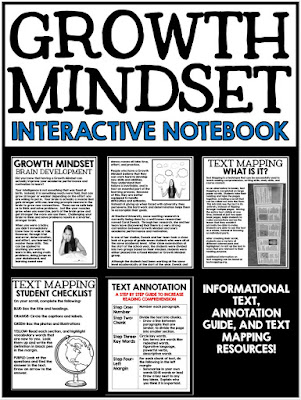Unless you have been hiding away in a hole in the ground, I am sure you have heard the concept of Growth Mindset pop up recently. It seems to be a buzz word in education lately, and with good reason - studies have shown that students who have this mindset accept and learn from failure and put forth maximum effort; having a Growth Mindset can have a tremendous impact on achievement and success.
The guru of Growth Mindset, Carol S. Dweck, is an author, speaker, and psychology professor at Stanford University. Through her studies, she has determined that people can have one of two mindsets - fixed or growth. People who have a Fixed Mindset see themselves as having a fixed intelligence; they believe they were born with the skills they have, and no amount of effort or practice will change them. This is where you hear people say things like "I am terrible at spelling", "I suck at basketball", or "I don't have the math gene". People with this type of mindset truly believe they are pre-programmed for a certain level of success.
People with a Growth Mindset, however, believe that their intelligence is something they have control over; they believe their intelligence can grow and change through hard work, effort, and determination. They may struggle with math, but they know that if they practice and put in the effort, they will eventually figure it out.
These developments mean big things for education. Scientists have found that changing a student's mindset can actually change their brains; this change in attitude changes the connections in their brains in ways that allow for improved learning.
As educators, we can obviously see the need to instill a Growth Mindset in our students. Real learning takes place in our classrooms when kids challenge themselves to break through barriers, learn from their mistakes, and find success in accomplishing difficult tasks.
Setting high expectations for the students in our classrooms in a big part of this. Through our words and actions, we need to show all students that they can achieve greatness - not just those who are considered average or above average. Those who struggle, or who may not have the support at home, need us even more.
We also need to work at getting kids out of their comfort zones. We need to put students in situations where they can learn to adapt to new situations and take risks. They need to learn that failure is part of the learning process, and that it is not all about getting the right answer. By embracing the struggle, kids learn to power through their mistakes, learn from them, and achieve real learning.
I find all of the research around Growth Mindset intriguing, and have spent a large part of my summer looking for ways to incorporate it into my classroom (and into the minds of my own kids!). For more information and professional reading, I strongly suggest you check out the books below.
To introduce the idea of Growth Mindset in my classroom, I plan to start the school year by creating an Interactive Notebook on the topic. We can then add to the notebook as the year progresses, and reflect back on it when necessary. I really like the idea of starting the school year with this - I think it will help to establish my expectations, and give us a strong reference point for the year.
For this activity, I had students brainstorm some Fixed Mindset phrases on one side of the paper, and then state the same things on the other side of the paper in a Growth Mindset way. I love the way this one turned out - great statements, and the effort put into the presentation of the activity really reflects a Growth Mindset!
If you are interested in some ready to use resources on Growth Mindset that you can use in your own classroom, check out my Growth Mindset Interactive Notebook below. You can pick it up in my Teachers Pay Teachers store by clicking here, or on any of the images below.
What are some of the ways you use Growth Mindset in the classroom? Let me know in the comments!








